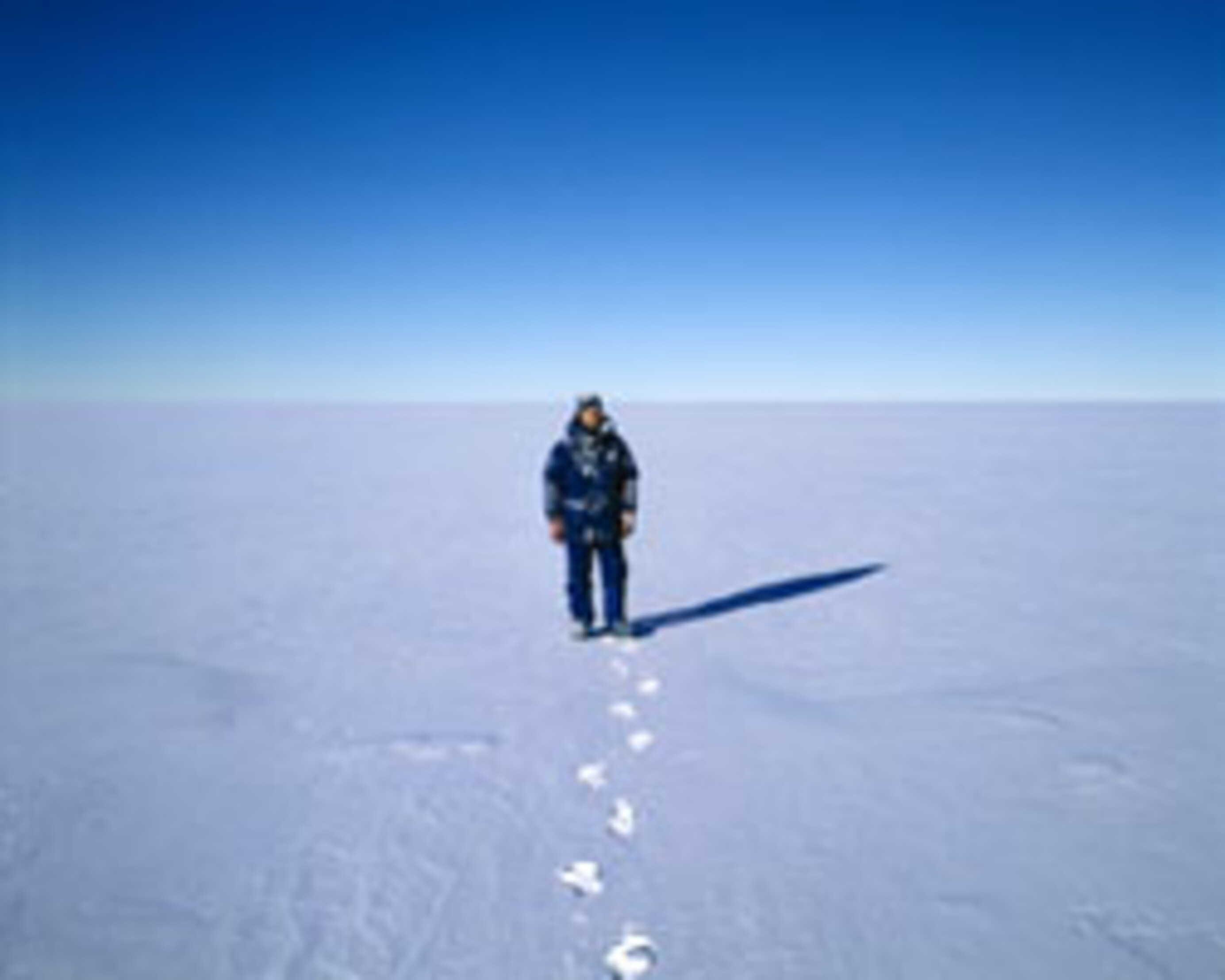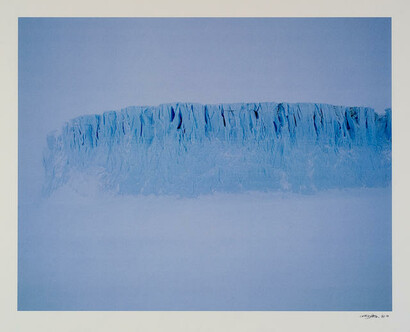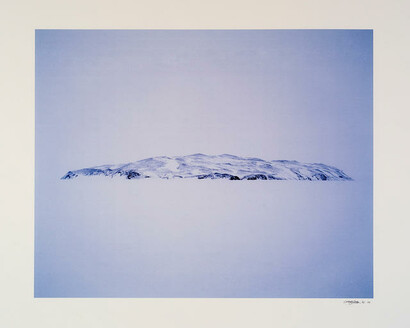This exhibition is now closed
Craig Potton: Floating on Ice
15 December 2006 –
9 April 2007

Craig Potton Robbie on the Ross Sea 2002. Photographic print (Lambda). Collection of the artist.
Craig Potton, one of New Zealand's most successful nature photographers, displays for the first time his photography of Antarctica's sublime Ross Ice Shelf.
Craig Potton, one of New Zealand's most successful nature photographers, displays for the first time his photography of Antarctica's sublime Ross Ice Shelf.
Peter Vangioni, Curator of Works on Paper, talks with Craig Potton.
PV: Untouched landscapes are obviously a source of inspiration for much of your work and reflect your background as a conservationist. What was it about your visit to the Ross Ice Shelf that inspired this body of work?
CP: From the moment I first saw photographs of this huge, flat expanse of frozen ocean I was hooked, and dreamed of going there. It is one of the largest untouched, unvisited wildernesses on earth, and for some 30 years I have been involved in campaigns to preserve it from mining, over-fishing on its edges, over-zealous scientists and excessive tourism. When I finally flew over and then landed at Scott Base on the edge of the Ross Sea, I was well and truly primed to feel an immense sense of gratitude that this wild, unmodified landscape existed. I wasn't prepared, however, for how stunningly beautiful the white ice and blue sky were, as well as the grey storm skies, or how strange it felt to be standing on the frozen ocean looking at the immense horizon. I remember standing by the plane, laughing and thinking, I'm going to start photographing right now; the plane and me on this great white tabletop of ice sitting on the ocean. Each day before we went into the Dry Valleys, I'd walk out from Scott Base and just stand on the frozen ocean and the ideas and images started coming.
PV: The Antarctic Arts Fellow Programme has given a number of New Zealand artists the privilege of visiting Antarctica, but I understand your visits were set up as special projects.
CP: I first visited Antarctica in 1993, before the programme's inception. I wanted to return to do more photography in the Dry Valleys, with a view to publishing a book on that phenomenal area, and also to visit Cape Crozier where Emperor penguins breed on the edge of the Ross Sea. I convinced Antarctica New Zealand to set up a special project for me for the 2000–1 season. They turned down my request to go to Cape Crozier on the grounds of leaving the penguins alone (which was fair enough), but gave me a great opportunity to work in the Dry Valleys as long as I paid for my own helicopter time. I make this point because I want to apply for the Arts Fellow Programme in the future to do more photos on the Ross Sea. It's a work unfinished.
Extract taken from Bulletin 147 December 2006 - February 2007.
Exhibition number 766
Exhibition number: 766

